BARRA DE NAVIDAD HISTORY
HISTORY OF BARRA DE NAVIDAD


The village of Barra de Navidad has been known by many names over the years. Originally it was known by the names of Puerto Santo, Puerto de Cihuatlán, Puerto de Juan Gallego, Puerto de la Purificación, Puerto de Xalisco, and Puerto de la Natividad. It was a Viceroy from Spain who named it Puerto de la Navidad because Spanish explorers made landfall in this port on a Christmas day. Captain Juan Fernández de Híjar —founder of Villa Purificación, found Puerto de la Navidad around the year 1535, “in a time of great need,” as he himself said. In time, a village and many ships were built on the shores of this Port. The village was built on a sandbar and the name was later changed to Barra de la Navidad for the bar of sand she sits on. The ships were built to support Spanish expeditions further west.

60 years ago, In 1964 the governments and people of Mexico and the Philippines celebrated the “Year of the Mexican-Filipino Friendship”. This celebration commemorated the joint agreement reached by Presidents López Mateos and Macapagal four centuries after a historic nautical expedition left from the Pacific Coast of Mexico and went to the Philippine Islands in search of gold. This nautical expedition fleet set forth by King Phillips II was made of 5 ships and about 350 men. All of Western Mexico had to be mobilized to support the undertaking of this expedition. Roads were built to bring ship building supplies from as far away as what is now Guadalajara. To this day, the main road between Guadalajara and Barra is known as Philippine Way. They left in the early morning of November 21, 1564 from what came to be known as Barra de la Navidad. The Spanish-Mexican expedition set out, under the command of the governor Miguel López de Legazpi and the Augustinian friar Andrés de Urdaneta. * The expedition crossed the Pacific in 93 days and made their first landfall in Isla de los Ladrones, which they identify by the type of sails on their boats and canoes that they saw. This island we now know of as Guam. From there they set sail for the islands now known as the Philippines.Legazpi did not tell the crew their final destination when they set sail and when they arrived in the Philippines he stayed. He put is 17 year old grandson at the helm to get the expedition fleet back to Mexico. This was return trip was both arduous and triumphant as supposedly no one had ever gone back to Mexico up until this point.
*Many historians have spent years pouring over historic documents to determine the exact location from which the expedition set sail from Mexico. Some have contended that the further south from Barra de Navidad perhaps in Manzanillo or further still off the State of Colima. However more have determined that there is not the slightest doubt that the expedition of López de Legazpi and Urdaneta to the Philippine Islands left from Puerto de la Navidad which certainly adds to the significant history of Barra de Navidad.



Just as Barra de Navidad was the jumping off point for many early sailing expeditions, Barra de Navidad is also home to the Ocean Posse Annual Kick-off Event. Posse events, seminars and gatherings occur on a small island across the lagoon from the town of Barra de Nadivad on Isla de la Navidad. Many sailors have and continue to set sail from this port for the adventure of their lives.
MORE
The history of Barra de Navidad, located on the western coast of Mexico in the state of Jalisco, can be traced back to its key role in maritime activities during the 16th and 17th centuries, particularly in connection to Spanish expeditions across the Pacific. Although it’s not directly a part of Spanish territory, its history is deeply intertwined with Spanish colonization and maritime exploration during that period.
Origins of Barra de Navidad
The town's name, "Barra de Navidad," is derived from the fact that it was first recorded by the Spanish explorer Antonio de Mendoza on Christmas Day (Navidad) in 1540 during one of his expeditions. Its name—“Barra” referring to the sandbar and “Navidad” meaning Christmas—pays homage to the holiday on which it was discovered.
In the following years, Barra de Navidad became significant as a shipbuilding center and as a departure point for many expeditions across the Pacific, most notably the expedition of Miguel López de Legazpi and Andrés de Urdaneta in 1564, which successfully led to the Spanish colonization of the Philippines.
Importance in the Spanish Empire (1600–1700s)
During the 1600s, Barra de Navidad was vital in Spain’s Pacific exploration. Spanish galleons would set sail from Mexico's western coast, particularly from this area, carrying goods and supplies for expeditions to the Philippines and other parts of Asia.
However, as larger ports like Acapulco grew more prominent for trans-Pacific trade and shipbuilding, Barra de Navidad's significance as a major port diminished, especially after the Manila Galleon trade was fully established between Acapulco and Manila. Still, throughout the 17th century, the town remained important to Spanish maritime activities and was used as a stopover for vessels moving along Mexico’s Pacific coast.
Decline and Local Development
By the late 1600s and into the 18th century, Barra de Navidad transitioned from being a major player in trans-Pacific expeditions to a more localized port serving regional trade. The town and its surroundings continued to develop as a fishing village and as a harbor that supported local economies.
The town’s fortifications and shipyards slowly declined, and over time, it became less of a hub for Spanish colonial ambitions and more of a peaceful settlement.
Modern History
By the 19th and 20th centuries, Barra de Navidad had transformed into a quaint fishing village with its early significance as a Spanish port largely forgotten. It wasn’t until the latter half of the 20th century that the town became more popular as a tourist destination, known for its beaches, fishing, and tranquil atmosphere. The historical remnants of its Spanish colonial past, though not as visible as in other Mexican port towns, still linger in the area's name and its early connections to significant maritime history.
If you're looking for a more detailed investigation into archival records or reports related to the Spanish influence on this town, this would involve diving into specific colonial maritime documents that reference the town's use as a port, such as logs from early expeditions or shipbuilding records from the 16th and 17th centuries.
The Spanish archives contain an extensive collection of documents, manuscripts, and maps related to Spain's exploration, colonization, and administration of its overseas territories, including places like Barra de Navidad during the colonial period. Here's a breakdown of some of the key archives and what you could expect to find in relation to Barra de Navidad and Spanish maritime history:
1. Archivo General de Indias (AGI) – Seville, Spain
The Archivo General de Indias holds the most comprehensive collection of documents related to Spain’s colonial administration in the Americas and the Philippines. These records are essential for studying the maritime and colonial history of places like Barra de Navidad.
- Shipbuilding records: Information on shipyards in New Spain (Mexico) and the construction of galleons used for expeditions, including those that departed from Barra de Navidad.
- Expedition logs: Detailed records of Spanish expeditions from ports on the Pacific coast of Mexico to the Philippines, most notably the Legazpi-Urdaneta expedition in 1564. These logs may contain references to Barra de Navidad as a launch point.
- Trade and navigation records: Documentation of the Manila Galleon trade route, which would have indirectly affected Barra de Navidad, including port stopovers, cargo manifests, and maritime routes used during the 16th to 18th centuries.
- Royal correspondence: Communications between Spanish officials in New Spain and the Spanish Crown regarding exploration and trade expeditions, including requests for provisions, supplies, or ship repairs in ports like Barra de Navidad.
2. Archivo General de la Marina Álvaro de Bazán – Viso del Marqués, Spain
This archive focuses on Spain’s naval history and could contain:
- Maritime maps and charts: Cartographic documents showing Pacific trade routes and coastal settlements, including Barra de Navidad, during the height of the Manila Galleon trade.
- Naval dispatches and orders: Military and administrative orders concerning the defense of ports, the construction of ships, and the deployment of naval forces from western Mexico.
3. Archivo Histórico Nacional (AHN) – Madrid, Spain
The Archivo Histórico Nacional contains a vast collection of historical documents related to Spain's governance and colonial activities, including:
- Colonial administration documents: Records from Spanish officials in New Spain who may have referenced activities in Barra de Navidad in their reports on shipbuilding, defense, and trade.
- Missionary reports: Accounts from missionaries traveling through coastal areas of Mexico, including possible references to religious activity or conversions in Barra de Navidad and surrounding regions.
4. Real Academia de la Historia – Madrid, Spain
This institution maintains records on Spanish exploration and colonial history, including:
- Expedition narratives: Historical accounts written by explorers, missionaries, or naval officers about their journeys to and from Spanish colonies, which may mention Barra de Navidad during the 16th and 17th centuries.
- Diaries and letters: Personal writings from naval officers, captains, or explorers who may have stopped in Barra de Navidad during trans-Pacific voyages.
5. Biblioteca Nacional de España (BNE) – Madrid, Spain
The National Library of Spain holds manuscripts and rare books related to Spanish history, including:
- Historical books on the conquest and colonization of New Spain: Many early Spanish chroniclers wrote about the ports and towns on Mexico's Pacific coast, including Barra de Navidad. These writings might provide context on the town’s importance during colonial times.
- Illustrated manuscripts and maps: Early drawings and maps showing Spanish settlements, trade routes, and naval infrastructure in Mexico, which could include references to Barra de Navidad.
Potential Documents in the Spanish Archives Related to Barra de Navidad
- 16th-17th-century maritime logs: These may detail departures from Barra de Navidad, noting its role in major expeditions.
- Correspondence between the Spanish Crown and colonial governors: Information about shipbuilding activities or the defense of the Pacific coast, possibly mentioning Barra de Navidad.
- Maps of the western Mexican coast: Showing Barra de Navidad in relation to other important maritime hubs in New Spain.
- Royal decrees and orders: Issued to support naval expeditions from Mexican ports, including instructions on supplies, repairs, and ship construction.
- Trade records: Mentioning the role of Barra de Navidad as a provisioning stop for ships headed across the Pacific to the Philippines.
Researching These Archives
Access to the documents within these archives typically requires specialized knowledge of historical research, as many of the records are written in early modern Spanish. However, these archives are actively digitizing materials, and many records can now be accessed online or through special research requests.
The Archivo General de Indias and other archives may also offer curated collections or exhibit records related to Spanish maritime exploration, which could contain references to Barra de Navidad’s role in the 16th and 17th centuries.
STORIES FROM DISTANCE SHORES
STORIES FROM DISTANT SHORES

Steve, from SV Wine N Down, has had many sailing adventures. He did a loop from Fort Lauderdale to the Caribbean, the Leeward / Windward Islands, Grenada and back. Then he sailed to Mexico, Belize, Panama to the San Francisco Bay. Now he is off anew on another voyage. Here he shares about their new adventure:
We are happy to be back out to sea. Our current trip so far: Right now, my three buddies and I are on a fishing adventure. Our lady friends/wife’s are flying in and meeting us at different locations throughout our planned four trips.
- Trip one will include our departure from SF on September 1 and ending in Long Beach. I need to return to Sonoma temporarily for grape and olive harvest time.
- Trip two will take us to La Paz, Mexico, with lots of fishing planned.
- Trip three will take us across the Sea of Cortez, with many stops along the way.
- Trip four should put us in for a stop in Puerto Vallarta and with a final home base in Barra de Navidad by around February 1st.
The adventure continues.




Steve says, “It’s all about taking our time and enjoying everything about cruising and enjoying our beautiful planet.”
SV WINE N DOWN 🇺🇸 Steve & Crew – Leopard 58′
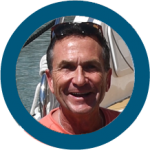
THANK YOU FOR SHARING YOUR JOY STEVE!
Ocean Posse Members, please share your stories by sending them to editor@oceanposse.com.
Maurisa, the editor, is always happy to receive your stories and share them out. Together we can inspire one another!
SEASON 8 AWARD ENTRIES: MOST UNWELCOME VISITOR
SEASON 8 AWARD ENTRIES: MOST UNWELCOME VISITOR

MY NEXT CHAPTER 🇺🇸 Chris & Shawna & crew – Selene 59′
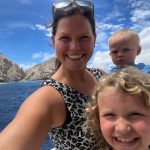

SY REMEDY 🇺🇸 Natalie & Karl – Leopard 45’
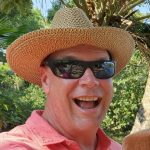


SY ROXXY 🇺🇸 Dennis & Kelly – Beneteau 52’

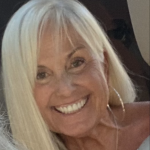

SY MAISON DE SANTÉ 🇺🇸 Nicole & Keenan- Cal 46′
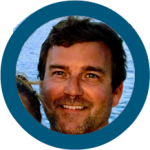
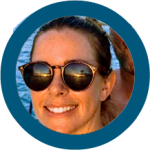

SV 🇺🇸 WINE N DOWN Steve – Robertson and Cane 58′

THANK YOU FOR SHARING STEVE!
OCEAN POSSE IS ACCEPTING SEASON 8 AWARD ENTRIES:
SUMBIT YOUR ENTRIES OR NOMINATE A FRIEND.
SEND PHOTOS TO MAURISA AT EDITOR@OCEANPOSSE.COM

OCEAN POSSE SEASON 8 AWARD CATEGORIES:
BIGGEST FISH CAUGHT*
PICTURE OF THE YEAR
YODA OF THE YEAR
SPEEDY AWARD – SEVENSTAR AWARD
THE CAPTAIN RON AWARD
MOST UNWELCOME VISITOR ONBOARD
HIGHEST WIND RECORDED
SPIRIT OF EXPLORATION
GALLEY GOD(ESS)
GOOD SAMARITAN OF THE YEAR
BOAT YOGA POSE OF THE YEAR
COURAGE AWARD
SAND CASTLE AWARD

LOGISTICAL PREPARATIONS
LOGISTICAL PREPARATIONS FOR LEAVING HOME WATERS AND ENTERING NEW COUNTRIES

Leaving ones home waters and entering a new country is certainly a big change and there are many essential details not to forget. Checklists are handy tools for preparing for Entry and Exit Requirements. Beyond the obvious boat essentials like checking your systems, having safety equipment onboard, topping your fluids, and changing your zincs, please see the checklist below for details not to be forgotten when setting out on a long distance voyage with the Ocean Posse.
- If an EPIRB is onboard a US flagged vessel, register it with the NOAA. Before leaving confirm that all information is current. This includes vessel name, your primary phone number, emergency contact name/s and address/es: https://beaconregistration.noaa.gov/RGDB/registrationRequirements
- A Ship Stations License is required by the FCC for travelling in international territories: https://www.fcc.gov/wireless/bureau-divisions/mobility-division/maritime-mobile/ship-radio-stations/ship-radio-stations
- Make sure the MMSI number of your vessel is registered in your name: https://www.fcc.gov/wireless/bureau-divisions/mobility-division/maritime-mobile/ship-radio-stations/maritime-mobile
- Have your boat documentation or registration up to date and in order. NOTE: most countries (and the Panama Canal Authorities) are requiring international navigation documentation indicating nationality and ownership over state registration. Check with your destination country.
- If the boat is documented or registered in the name of someone not present or the name of a business or organization: a letter notarized by the documented vessel owner authorizing the captain and crew to be operating the vessel is required to enter other countries (and transit the Panama Canal). It is imperative to have both the original and copies of all notarized documents.
- Depending on the country you enter you will buy a Temporary Import Permit which allows the vessel to enter the country. This is an important document to keep with the vessel the entire time in the country of entry. This document is also required upon exiting many countries.
- Current passport for everyone onboard ideally good for the duration of your stay abroad.
- Many countries require a Crew List upon entry which states everyone onboard, their Date of Birth, their rank on the vessel and their passport number.
- If navigating into Mexico, Mexican Liability Insurance is required to Navigate in Mexican waters.
- If navigating in Mexico, the captain is required to show a boaters education card, ASA certification, or a captains license upon exiting the country.
- Outside of the United States, when exiting one country and entering another you will need an authorized document of exit (called a zarpe throughout Central America) from one country in order to enter the next country.
- Wherever you go along the route, be prepared for entry and exit requirements and seasonal changes.
It is not entirely uncommon for requirements to vary port to port. The best practice is to be prepared with everything and not be asked for them than to be asked for something you do not have.

THREE GREAT STOPS EN ROUTE TO THE KICK OFF PARTY
THREE WEST COAST DESTINATIONS
JUST SOUTH FROM THE WEST COAST OF THE USA
EN ROUTE TO SEASON 8
KICK OFF PARTY IN BARRA

|
The Ocean Posse highly recommends checking into Mexico in Ensenada as opposed to Isla Cedros. Mainly, if you are looking for a more efficient check-in, Ensenada has localized, reliable office hours and staffing in comparison to Isla Cedros. Either way, once your vessel and crew are cleared in you are free to begin voyaging the Mexican coast at your leisure. While making your way to the Season 8 Kick Off Party in Barra De Navidad, Mexico there are many incredible destinations along the way. 3 destinations are highlighted below: Islas San Benito del Oeste, Man of War Cove (or Puerto Magdalena in Bahia Magdalena), and Isla Isabela. Each incredible. Each unique. Each only accessible by boat. |
DESTINATION 1: Islas San Benito del Oeste,
|

The Islas San Benito is a group of three small islets that lie in the Pacific Ocean off the west coast of the Baja Peninsula, about 225nm SE of Ensenada and 55nm NW of Bahia Turtugas. The islands are surrounded by rocks and patches of algae so careful watch is required. Many birds and marine mammals are on, along, and surrounding these shores. There is a small community on the island; the 2001 census recorded a population of two people in Benito del Oeste The other islands are not inhabited. There is a cooperative abalone aquafarm there worked by people from nearby islands. If you are lucky enough to have the weather window to drop your hook, do not miss the chance.

DESTINATION 2: Man of War Cove (or Puerto Magdalena in Bahia Magdalena) 
Latitude: 24°38.918'N Longitude: 112°08.013W
Man of War Cove (or Puerto Magdalena) is merely the beginning of the wonder that is Bahia Magdalena. After spending time on the ocean along the pacific side of the Baja, turning into the expansive and protective bay of Bahia Magdalena is quite a sight. Bahia Magdalena is all but cut off from the ocean by a varied stretch of long, narrow, tall barrier islands. Inside the 325 square mile bay there are expansive estuaries, sand dunes, and mangroves that a wide variety of wildlife call home. Northern Grey Whales migrate there annually from January to April to breed and have their calves. Bahia Magdalena is their sanctuary and it is a truly special place to enter into. In the small village of Puerto Magdalena one may find a small tienda with light provisions. There are multiple options in the larger town of San Carlos further east into the bay.


DESTINATION 3: Isla Isabel  Mexico
Mexico
21° 50.4960' N, 105° 52.9730' W

Crossing ESE from the southern tip of the Baja Peninsula, Isla Isabella is a small island found 15nm off mainland Mexico south of Mazatlan. This island is a bird sanctuary that some people refer to as the Galapagos of Mexico. The island is teaming with blue footed boobies, frigate birds, and iguanas. The near shore waters are frequented by humpback whales and dolphins and home to a myriad of small fish. The island can be explored on foot on multiple trails, in the water with a snorkel mask, or along the tide line at low tide. There are three main anchorages each providing protection from a different wind and sea states and yet the island is a small isolated offshore island so getting a weather window to stop and enjoy Isla Isabella is an opportunity to be thankful for. It is definitely unforgettable.


https://goodnautical.com/mexico-pacific/anchorage/isla-isabella
DINGHY SAFETY AND SECURITY
DINGHY SAFETY AND SECURITY

Sailing down the Pacific coast of the United States from the Puget Sound in 2018 on SV ARROW, I quickly learned the importance of dinghy safety and security.
FIRST: Timing landings and take off's is KEY.
From the beginning, almost every take off and landing of the tender to and from the shore was affected by ocean swell until well north in the Sea of Cortez or tucked deeply into a very calm corner of a bay. I think it is a safe bet that every cruiser has a tale of a dinghy landing or more that went wrong. Maybe it involves flipping their dinghy, turning sidelong to the wave at a terrible moment, not having enough motor power to push through the waves, getting swamped on the take off just before passing clear of the breakers, etc.
I guarantee these are not moments worth repeating so it is imminently importantly is to know how to land and take off safely. The first step requires patient study of the waves and the beach:
- Where is the calmest area of the beach with a good landing zone.
- Where are the waves breaking?
- How many waves are in a set and how big are they?
- How much time is there between sets?
For us, watching the 'pangueros' in every country from Mexico to Panama pilot their pangas on and off the beach was incredibly instructive. They have local knowledge of where to land and time tested patience watching, waiting, and taking the gap in the swell for the smoothest ride in and out. At best one rides in on the back of the last wave in a set, glides to the beach, pops out and pulls the dinghy to higher ground swiftly based on the size of the waves. At best on takes off by entering the water, walking the dinghy in past the break zone after the last wave in a set, hops in, starts the motor, and zips out of the crash zone before the next set comes in.

SECOND: The dinghy motor is well balanced to the size of the tender and their crew
When we first left the Puget Sound we had a super sweet rowboat that we made years earlier. No motor and two of our four person crew were growing by the minute. In San Diego, we bought an inflatable tender and motor that allowed us to get on and off shore with more speed when we needed it and more space so we were not over loading our small craft. Lots of people cover their motor in an old XL t-shirt, stickers, or scratches, or a canvas motor cover to camouflage and/or protect it.

THIRD: Dry bags keep important items safe...and dry.
No matter how calm the conditions, once in the dinghy one is closer to the water than they were on the mothership. Everything (from one's clothes to one's camera or wallet) in the dinghy is at risk of getting wet either from spray while moving or a wave while landing or taking off. Accidents can and do happen. Using dry bags or dry boxes keeps the losses to a minimum.
FOURTH: Good dinghy wheels are AWESOME.
Reliable and stout dinghy wheels are the most efficient way to move the dinghy to higher ground. Our favorite wheels (and our third set to date) are Beach Masters out of New Zealand. They have a smooth action to put them up and down and they are stout so they can roll over uneven rocks when necessary.

FIFTH: Even the tender needs a reliable anchor.
If the landing is untenable or you want to snorkel near a reef and the dinghy must be anchored out, ideally one has a dinghy anchor, a little chain and some rode that can be securely attached to the dinghy.
SIXTH: A secure combination Brass U Lock will withstand years of salt and exposure and is an excellent baby-sitter
Dinghy locks keep discourage theft and give us piece of mind when going to sleep or going ashore to explore or provision. We keep the motor locked at all times although my captain would prefer a lock that covers up the motor clamps. We also and have a second setup that includes a long bicycle cable and Brass U Lock. We use the cable to lock the dinghy to something secure ashore. Additionally, in 99% of all places we have anchored up and down the Pacific Coast of North and Central America, we always raise the dinghy up at night to discourage theft and be sure that we are not relying on a knot to keep our dinghy close.

COMING SOON TO SV WHIRLWIND: A Small Dinghy Survival kit with a few essentials.
While we have been using our tender to come and go from our vessel for six years now we always bring a handheld vhf radio with us and often grab a few extra things here and there depending on where we are going, the time of day, and/or the occasion. In the coming weeks we are determined to make a small dinghy survival kit that will just live in our dink, MV TUMBLEWEED.
We plan to include:
- a small first aid kit
- a signal mirror
- a flashlight
- fire starter
- a flare
- a pocket knife
- sunscreen
- a corkscreen/bottle opener
We may make a canvas bag, re-dedicate a drybag, or integrate a pocket into our chaps to house this kit. Stay tuned.
SV WHIRLWIND 
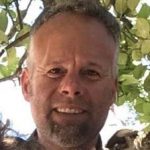
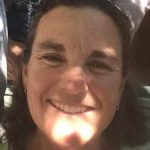


FIJI REGATTA WEEK 2024
UPCOMING EVENT : FIJI REGATTA WEEK
11-15 September, 2024
in beautiful Musket Cove

Registration for the 2024 40th Anniversary Regatta is now open. Please book early!
This link will take you to the Regatta Registration form.
Please note this form is for Regatta Registrations only. For all Marina Berth and Mooring bookings, please email Patrick directly at: mcyc@musketcovefiji.com. Please book early as there are limited Marina Berths available.
https://pacificposse.com/musket-cove-marina
MUSKET COVE MARINA 
SPONSORS THE PANAMA POSSE

We welcome any of the South Pacific Posse to Musket Cove at any time.
We’re pleased to offer a Free Berthing Day for 5 Paid Days to all of your Posse Members.

Wayne Deed
Director of Sales & Marketing
Musket Cove Island Resort & Marina
Malolo Lailai Island
Fiji Islands
m| +64 21 824266
P | +679 666 2215
MUST SEE: 🇩🇲 Morne Trois Pitons National Park, Dominica
MUST SEE: 🇩🇲 Morne Trois Pitons National Park,
Dominica 🇩🇲

Morne Trois Pitons National Park is on the Island of Dominica in the southeastern Caribbean Sea. The volcanic island is quite heavily forested and mountainous, rich in water and fertile soil, and still has a number of (rarely) active volcanoes, volcanic vents, bubbling mud ponds, and hot springs. The National Park was established by the Dominican government in 1975 and made a UNESCO World Heritage site in 1997 for its uniquely stunning geologic (volcanic) formations, its biodiversity, and its huge stores of water. Nearly all the headwaters of the streams and rivers that hydrate and power the southern half of the Island begin in Morne Trois Pitons National Park.


The National Park encompasses a lake called Boiling Lake, so named for the gasses that bubble from beneath it and keep the water temperature to over 95 degrees Celsius. The mountainous landscape is punctuated by three main peaks (hence Trois Pitons) that are steep and rugged with waterfalls, freshwater lakes, and a huge variety of flaura and fauna, several endemic to Dominica.



Preserving Wildlife is important to this Island nation that considers nature prime importance to their survival and food security. In addition to abundant fruit, The Mountain Chicken frog was once considered the nation's unofficial national dish. A decline in their numbers led to conservation efforts including hunting season regulations and scientific attention. However, no amount of regulations can hold back mother nature and both a soil borne fungus and a volcanic eruption resulted in significant reduction in many amphibious animals including the Mountain Chicken. Therefore, in spite of conservation efforts, their species numbers have continued to decline and they are on the brink of extinction. As of November 2023 scientists believe there were 30 known Mountain Chicken Frogs left.
There is hope in that Dominica has actually made tremendous strides that offer hope to the survival of the species identifying genes of resiliency that can be treated to eliminate the fungus illness in the frogs. Time will tell.
EXPLORING INLAND TO BELGIUM
AFTER CROSSING THE ATLANTIC OCEAN
SV QUESO GRANDE II GOES INLAND TO BELGIUM




SV QUESO GRANDE II 🇺🇸 Lance & Sherri – Seawind 1260 41′
Looks like your sea legs are taking you far; Thanks for sharing!
: The Venice of the North
Nestled in the northwest of Belgium, Bruges is a city that seems to have been plucked straight out of a fairy tale. With its picturesque canals, medieval architecture, and cobbled streets, it is no wonder that Bruges is often referred to as the “Venice of the North.” This enchanting city has preserved its medieval charm, making it one of Europe’s most beloved destinations.
A Historical Tapestry
Bruges’ history dates back to the 9th century when it was founded by the Vikings. By the 12th century, Bruges had become a bustling trading hub, thanks to its strategic location and access to the North Sea. The city’s prosperity peaked in the 14th century when it was one of the leading cities of the Hanseatic League, a powerful commercial and defensive confederation of merchant guilds and market towns in Northwestern and Central Europe.
The wealth generated by trade is still evident today in Bruges’ stunning architecture. The city is a treasure trove of Gothic, Renaissance, and Baroque buildings, many of which have been meticulously preserved. The Belfry of Bruges, a medieval bell tower in the city’s heart, is one of its most iconic landmarks. Climbing the 366 steps to the top offers panoramic views of the city and is well worth the effort.
The Canals of Bruges
Bruges is famous for its network of canals, which wind their way through the city and have earned it the nickname “Venice of the North.” These waterways were once vital for trade, allowing goods to be transported easily throughout the city. Today, they provide a scenic way to explore Bruges. A boat tour along the canals offers a unique perspective of the city’s stunning architecture and charming bridges.
Art and Culture
Art lovers will find plenty to admire in Bruges. The city is home to several world-class museums, including the Groeningemuseum, which houses an impressive collection of Flemish Primitive art. Works by masters such as Jan van Eyck and Hans Memling can be found here, offering a glimpse into the rich artistic heritage of the region.
In addition to its museums, Bruges is famous for its lace-making tradition. Lace has been made in Bruges for centuries, and visitors can learn about this delicate craft at the Lace Center, where demonstrations are held regularly.
Culinary Delights
No visit to Bruges would be complete without indulging in its culinary offerings. Belgian chocolate is renowned worldwide, and Bruges is home to some of the country’s best chocolatiers. A stroll through the city’s streets will reveal numerous chocolate shops, each offering a tempting array of pralines, truffles, and other sweet treats.
Bruges is also a great place to sample traditional Belgian cuisine. Mussels and fries, known as “moules-frites,” are a must-try dish, as is the hearty Flemish beef stew, “carbonade flamande.” Of course, no meal in Belgium is complete without a glass of locally brewed beer. Bruges has several breweries, each producing unique and flavorful beers that are sure to delight any connoisseur.
A Timeless Charm
What makes Bruges truly special is its ability to transport visitors back in time. The city’s medieval architecture, cobbled streets, and tranquil canals create an atmosphere that is both romantic and timeless. Whether you’re exploring the historic Markt square, visiting the Basilica of the Holy Blood, or simply enjoying a leisurely boat ride, Bruges offers an experience unlike any other.
Bruges is more than just a city; it is a journey through history, art, and culture. Its charm lies in its ability to blend the old with the new, offering visitors a glimpse into the past while still being a vibrant and lively place to explore. Whether you’re a history buff, an art lover, or simply looking for a romantic getaway, Bruges has something to offer everyone.

ISLAND ADVENTURES ASHORE
SV VIVA'S ISLAND ADVENTURES ASHORE

SV VIVA is in French Polynesia in the South Pacific. Their recent report shares a few different ways to explore the islands of Moorea and Tahiti:
We rented a scooter and toured the island of Moorea yesterday and did a 9-mile hike up to Belvedere and back on the 3-cocotier trail a few days ago...found many amazing views. Today, we took the ferry across to Tahiti at 7 am, rented a scooter and toured the whole island with several beautiful stops along the way. We sprinkled this tour with some provisioning that we could fit in backpacks and boxes on our rented scooter.



VIVASweet bike lane!
SV VIVA 
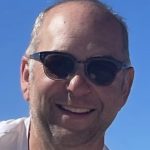
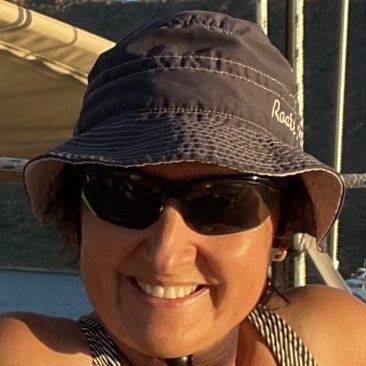
Adventurous and Practical! Thank you for sharing VIVA!











